The Scania Chronicle
Page 8
By Christoph Büch and Steve St.Schmidt (Berlin 2023)
Serie 4 ab 1996:
Im Bertone-Design
In the mid-1990s, Scania was on the verge of a generation change, which had been announced in the Spring of 1995, when selected customers had already received pre-series vehicles for testing. At the IAA 1996 in Hanover, the time had come. With the introduction of the Series 4, the Scania range was completely redesigned. An aerodynamic cab, created by the Italian design and automotive company Carozzeria Bertone, replaced the outdated predecessor series and can be seen as the basis for the Scania design of the 2000s. Kaj Holmelius, who was responsible for cab development at Scania for almost two decades, explained: "Series 4 must be seen as one of the high points in Scania styling. A manufacturer like Scania only makes such major changes every fifteen years".
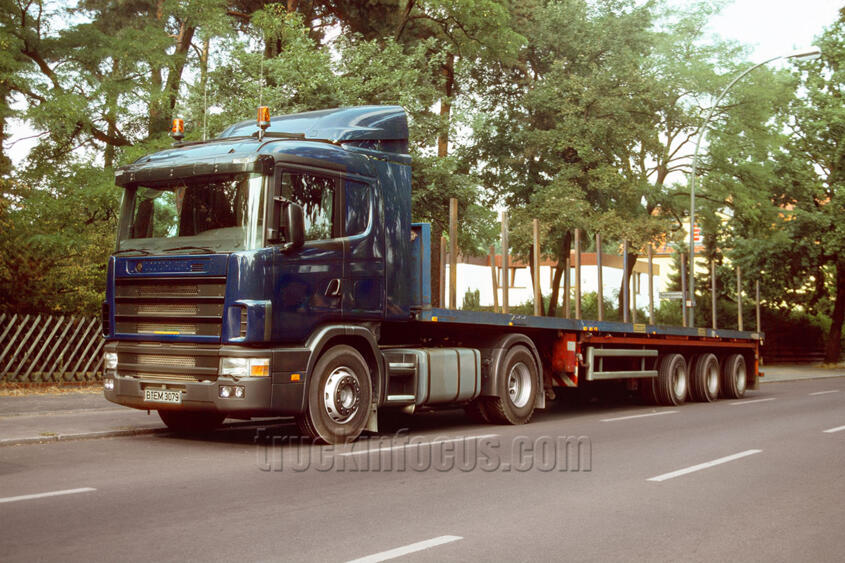
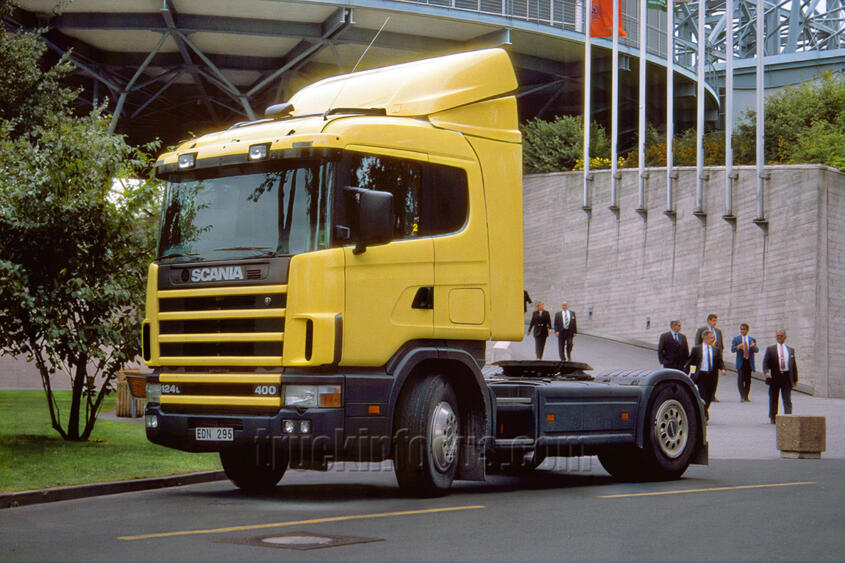
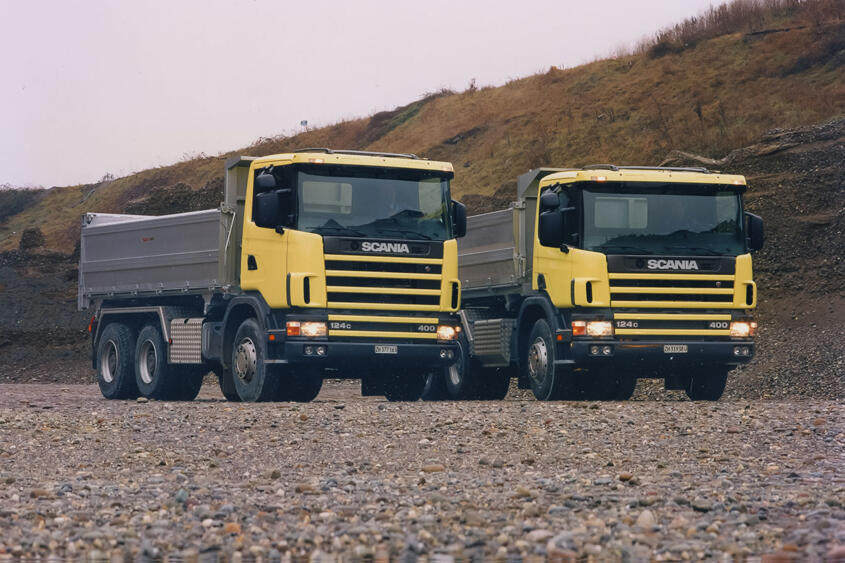
The type designations also changed. There was now a letter in the first position (although not on the vehicles):
P for low cab-over
R for high cab-over
T for conventional
This was followed by the approximate cubic capacity of the respective engine, then a 4 as the series designation and a letter for the purpose of the vehicle:
D for Delivery
L for Long Distance
C for Construction
G for General Purpose (reinforced frame for robust requirements)
This was followed by the horsepower of the engine
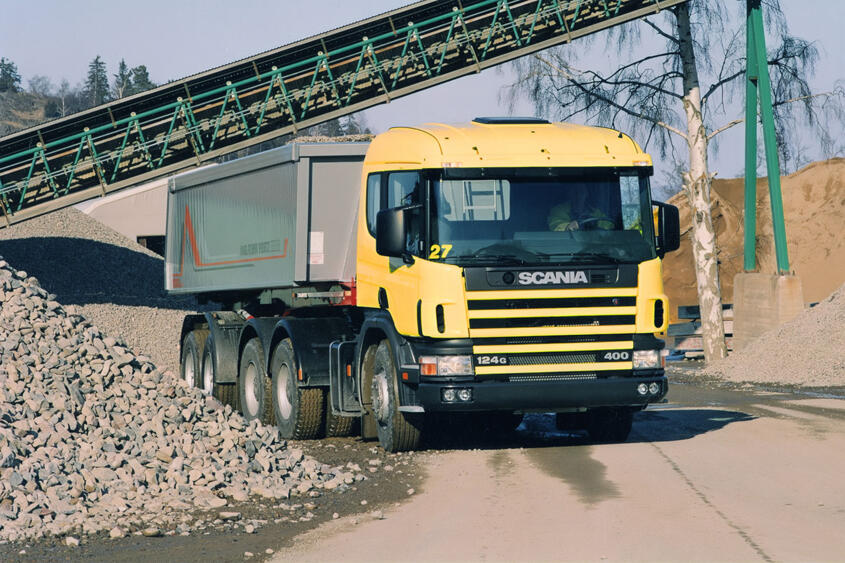
The 2.25-gallon DSC 9 engine now produced 220, 260 and 310 hp, the 2.9-gallon DSC 11 engine initially produced 340 hp, later 380 hp and its successor, the DSC 12, 400 hp. The DSC 14 V8 engine, which was offered in two versions (460 and 530 hp) when the Series 4 was launched, was only available for the conventional and the high cab-over with R cab. An automated 12-speed "Opticruise" transmission with integral retarder was available for long-distance transportation. Another new feature was an electronically controlled braking system with disc brakes and ABS system.
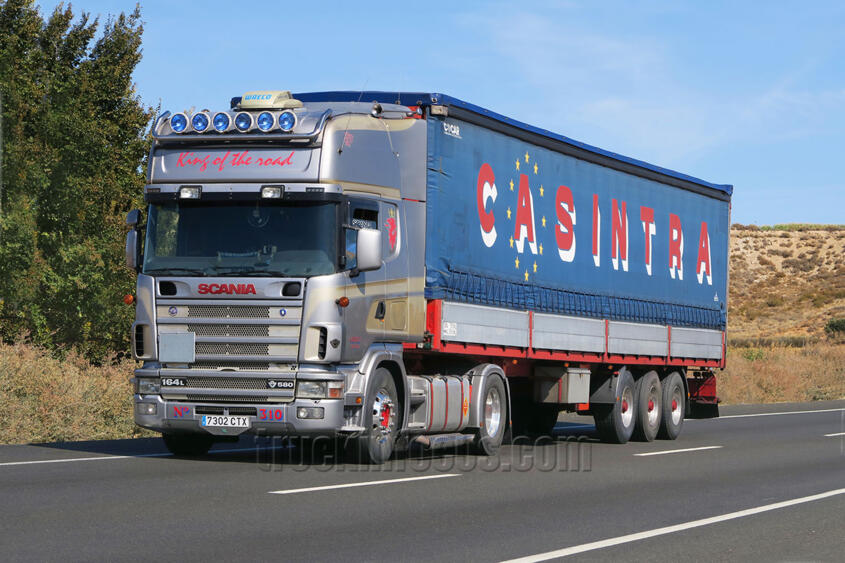
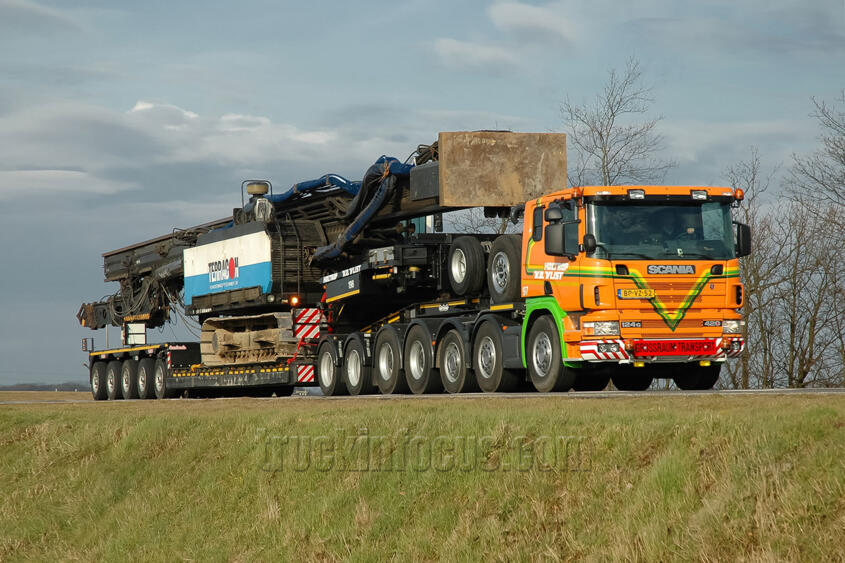
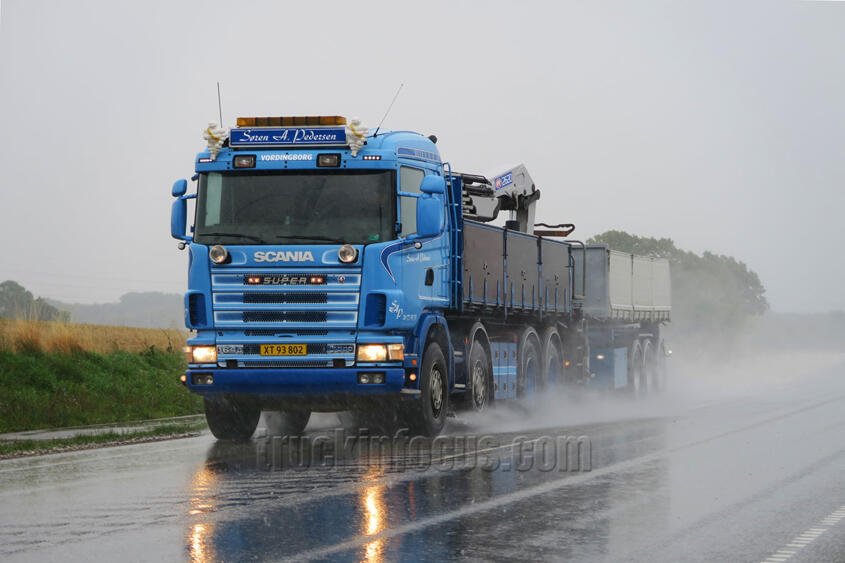
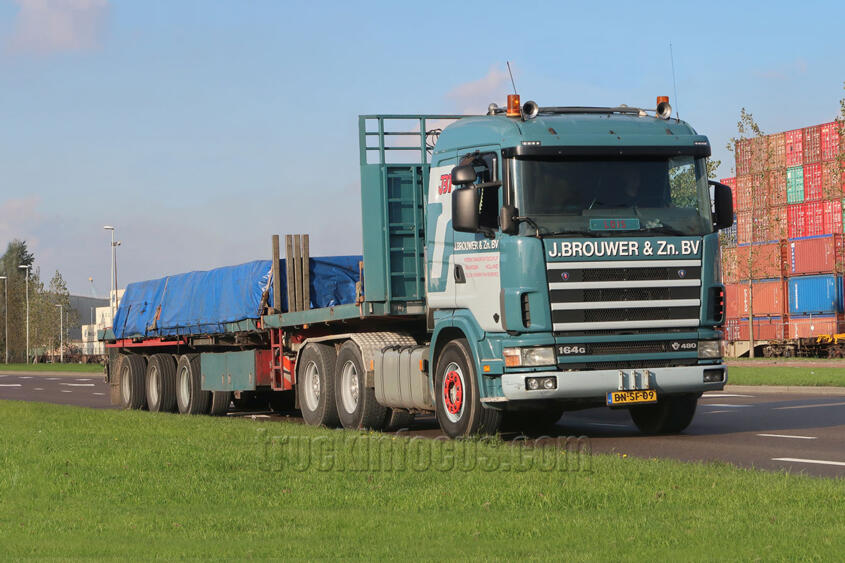
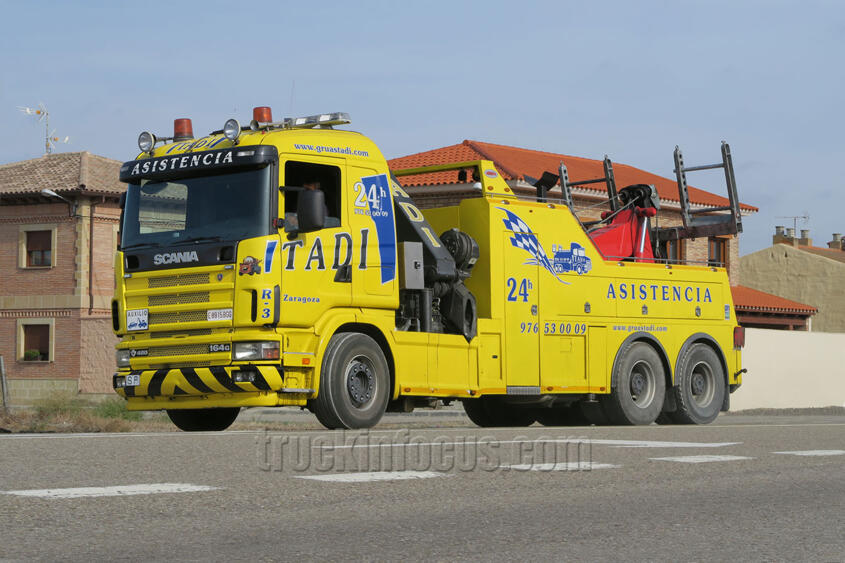
The Series 4 conventional models, known as the T-series, differed from the cab-overs only by a hood connected to the cab and adapted wheel arches adjusted to fit. Once again, Scania's modular system proved its strengths, even if the "soft look" of the new hood generation did not meet with approval everywhere.
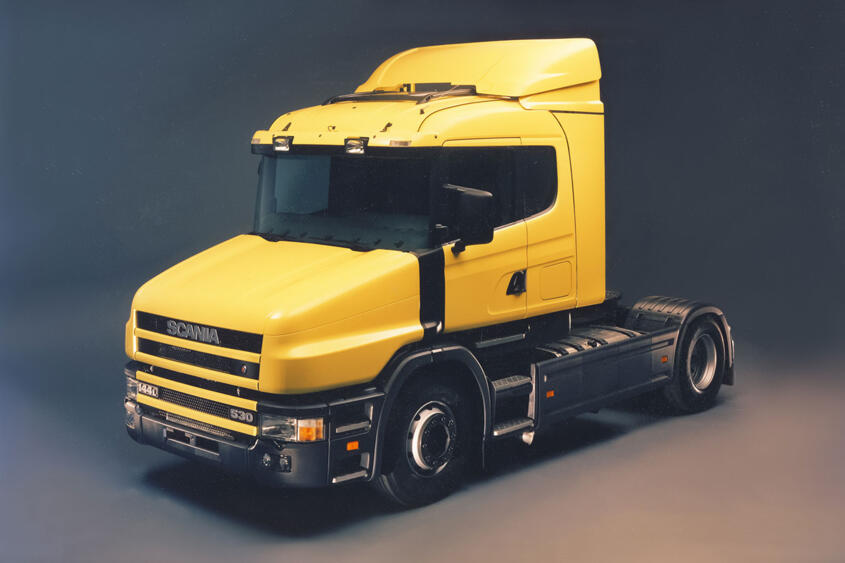
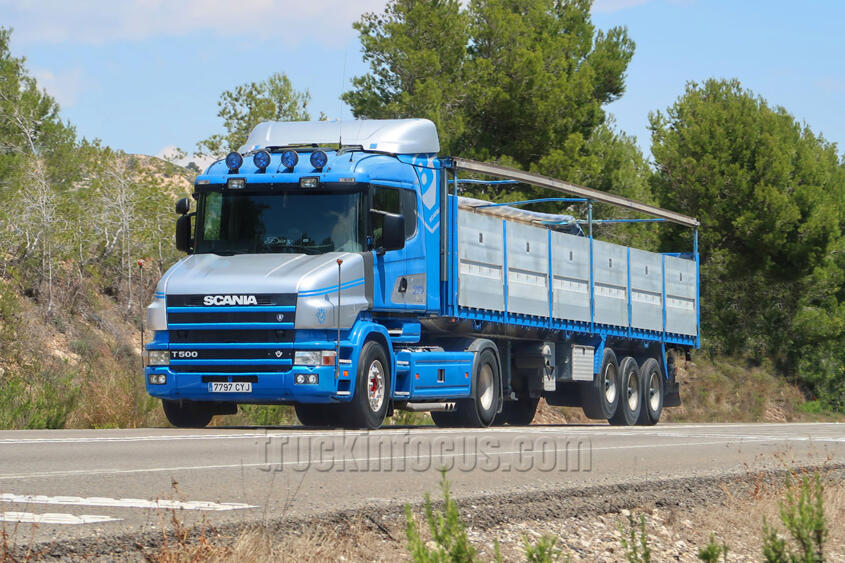
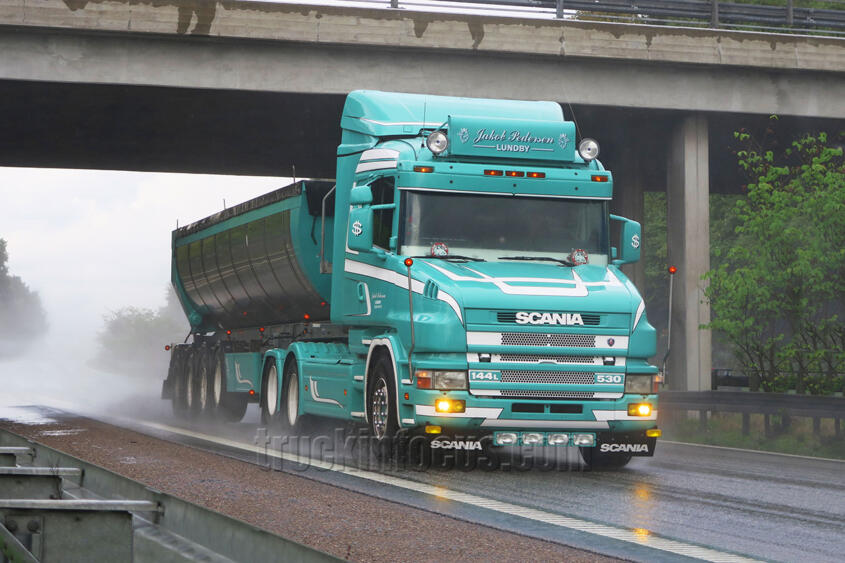
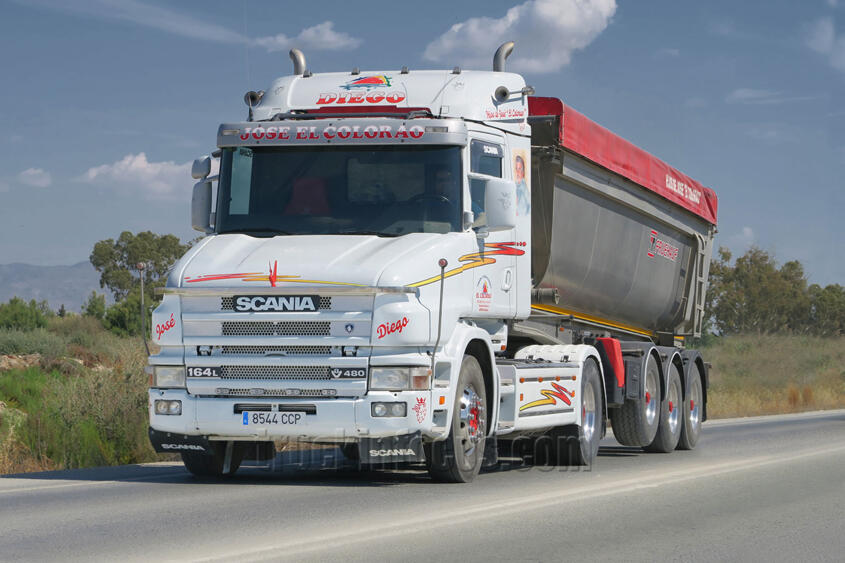
The 4-series, which was launched worldwide at the same time, led to an increase in production by 4000 to 43,000 vehicles per year. In Western Europe, Scania was now in third place with 15 percent of registrations, as was also the case in Germany. In 1998, the DS 12 with its new injection system (pump-nozzle) was boosted to 470 hp. To maintain the necessary distance, the DS 14 was increased to 530 hp.
At the end of the 1990s, the ownership structure at Scania changed. Competitor Volvo had secretly bought a first block of shares, so to speak, and a second followed. And Scania was indeed sold to Volvo: The purchase price was 25 percent higher than the stock market value. However, the EU competition authorities vetoed the deal and it fell through. Volkswagen then seized the opportunity, initially securing 34 percent of the shares and was thus already in control. Those responsible at Scania were relieved by this development, as they would have been reluctant to see Scania vehicles with Volvo components. And as Scania had been VW's general importer for Sweden for many years, relations with the German group had always been based on partnership.
In 1999, Scania was the first truck manufacturer to make the EBS electronic braking system ready for series production. Scania was also the first manufacturer to offer Euro 3 engines at the beginning of 1999. The power range from 220 to 530 hp was covered with just three engines. The 2.38-gallon engine ranged from 220 to 310 hp, the 2.9- and 3.9-gallon units from 340 to 420 hp and the V8 with 3.75 gallons was available with 460 and 530 hp. The proportion of identical parts was high, pistons, valves and cylinders were identical in all engines. The German trade magazine Lastauto-Omnibus called the Swedish designers "virtuoso masters of the modular principle".
After the year 2000, annual production amounted to 40,000 to 50,000 vehicles. This made Scania the fourth largest manufacturer in the heavy-duty class over 15 tons after Mercedes, Volvo and Paccar.
In 2001, the long-awaited six-cylinder "Turbo Compound" engine with an additional turbine in the exhaust system was launched. With 470 hp, it came very close to the smaller of the two V8 variants, with additional weight and consumption advantages. This engine was the first to be equipped with a new electronically controlled injection system for higher injection pressures (up to 2400 bar), which was developed jointly with Cummins. The system was called High Pressure Injection (HPI). It was soon also used in the other engines and ensured greater efficiency thanks to higher torque and lower fuel consumption. In addition, the maintenance intervals of the HPI engines were doubled from 37.000 to an impressive 75.000 miles.
Scania was not only met solely with enthusiasm at the IAA 2002 when the 11.8 feet long, fully equipped eXc cab (Extended Cab) was presented. On the one hand, there was talk of lost cargo space. On the other hand there were enthusiastic reactions from trade fair visitors who had always wanted an apartment on wheels for their truck. In fact, Scania subsequently built small numbers of tractor units with a 580 hp V8 engine and the luxuriously equipped cab, which was now called Longline.
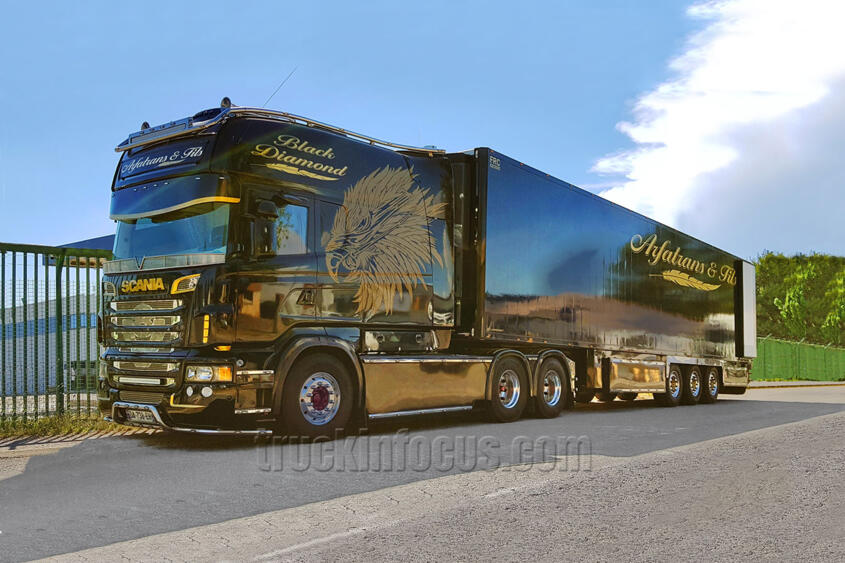
Around 2002, Scania tried to gain market share in Japan. In cooperation with the Japanese commercial vehicle manufacturer Hino, some vehicles were sold, but the hoped-for success did not materialize. The climatic conditions in Japan led to technical problems, which initially caused Scania to withdraw. In the following years, however, a new attempt was made on the company's own initiative. Scania has been gradually establishing itself on the Japanese market for several years now. The modular system and the powerful V8 engine in particular have gained a good reputation over the years.